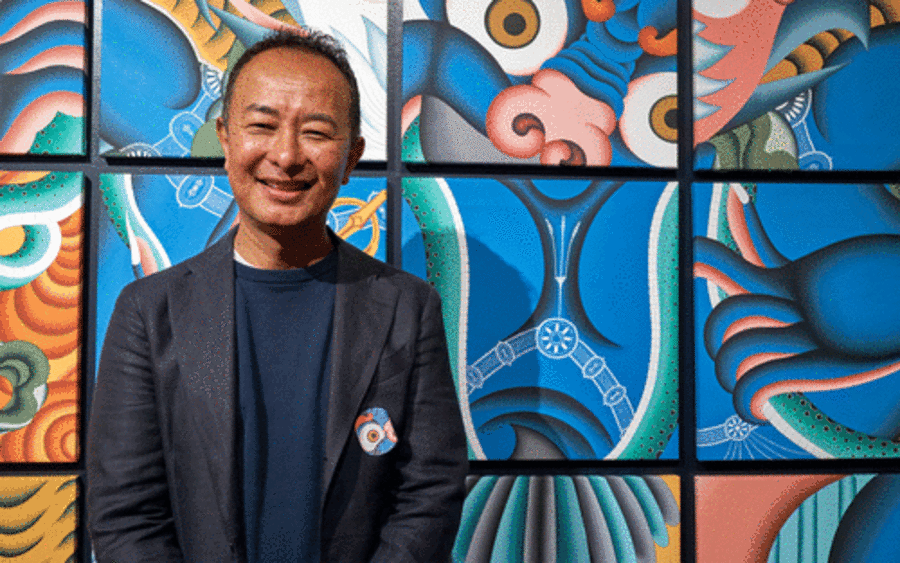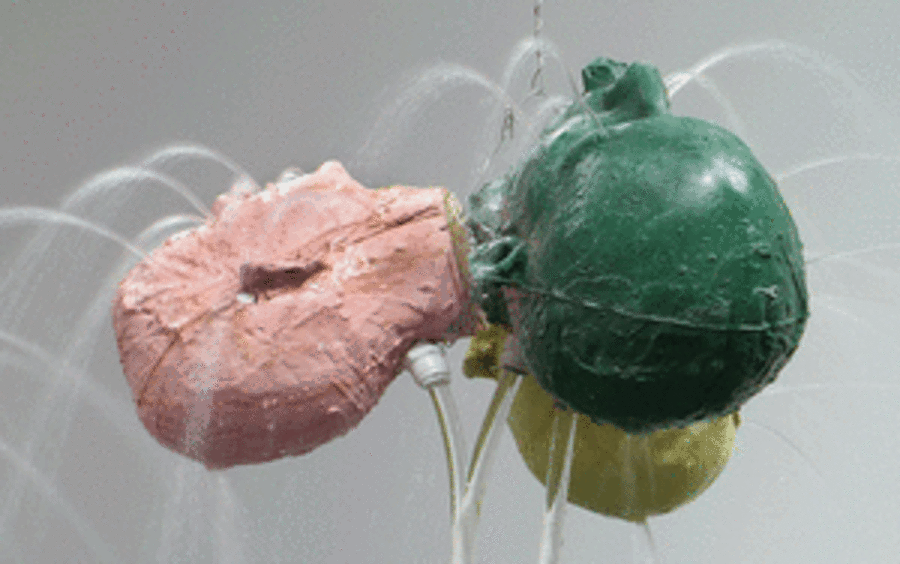Curator:
Billy Tang, Executive Director and Curator, Para Site, Hong Kong
Artist:
Art Labor
‘Art Labor is a Ho Chi Minh-based collective that resists the idea of fixed art practices or categorization. They exhibit in places that you wouldn’t expect, like remote villages in the Central Highlands region of Vietnam, hospitals, a botanical garden, and now biennales. They’re agile, nomadic, and resilient. They have developed in a region where there is still a lack of infrastructure to support them. I am inspired to see how they have found ways to support themselves driven by their friendship, which is rare in the art world.
‘The collective often deals with environmental issues, Indigenous rights, and postcolonial narratives. They also have a long-standing dialogue with the Jarai people (an Indigenous community living in Vietnam’s Central Highlands). At the last Okayama Art Summit, they created a bamboo installation which was like a wind instrument powered by the kinetic force of nature. It is inspired by the spirituality of the Jarai and their philosophy, which stretches beyond the human-centric worldview and believes that we are just one part of a larger ecology.’
Curator:
Vera Mey, Co-Artistic Director, Busan Biennale 2024
Artist: Eugene Jung
‘Eugene Jung is an emerging Korean artist who looks at ruins and post-apocalyptic situations and realizes them as sculptures. She is influenced by being part of a younger generation facing impending (human-made) disasters, but also by narratives of cartoons and anime. The last exhibition I saw of hers was an installation that she staged in a boxing gym with foam sculptural forms brushed to look like metal. It was like a sculptural rendition of cartoon drawings interacting.
Many Korean artists are very elegant in terms of the realization of their work. Eugene is very skilled, and her work is elaborate but it’s not too precious or elegant. It’s very bold. I appreciate her daringness. For a younger Korean woman to have this kind of bravado in her work is quite fascinating. She’s also got a certain sense of humor that is unique.
She is one of the youngest artists in the Busan Biennale, where she is showing a large-scale installation which resembles a ship crashing into the shore.’
Curator: Clara Che Wei Peh, curator and writer, Singapore
Artist: Cao Shu
‘I discovered Chinese artist Cao Shu during my time as Asia Collection Fellow at Kadist. I am interested in how he reactivates historic narratives and events through rigorous site-specific research. He aims to access what he calls our “perceptual level of memory” where our brains formulate a subjective understanding of an event, which can often be a distance away from its objective “truth.” He plays with this distance through 3D digital moving images, interactive games, and installations. His work Phantom Sugar (2023) is a great example of his immersive storytelling abilities. It combines video footage guided from a drone’s perspective with video-game-engine rendering, to move through the layered history of a sugar factory in Guangdong. The work explores the complexities of human desire to predict and control the future. The work draws on historical records, swarm algorithms (modelled after natural swarms), and vertical farming to reveal our fraught relationship with our environments and our quest for control.
Curator:
Shabbir Hussain Mustafa, Senior Curator and Head of Exhibitions, Guggenheim Abu Dhabi
Artist: Ho Tzu Nyen
‘I first encountered Ho Tzu Nyen’s video works as an undergraduate student and have followed his practice since. Last year, I co-curated a mid-career survey of his works at the Singapore Art Museum.
Ho Tzu Nyen’s art is an embodiment of a political ethos that challenges conventional hierarchies in our understanding of the past. He creates film installations narrated by a constellation of unruly characters who act as mediums that engage with the very nature of identity, storytelling, and the passage of time in Asia, particularly since World War II. These characters are constantly metamorphosing. For instance, the triple agent and Malayan communist leader Lai Teck was also known as Trương Phước Đạt, Loi Teck, Lighter, and Mr. Wright to British, French, and Japanese authorities respectively. Singapore’s precolonial founder, Sang Nila Utama, who was the protagonist of Tzu’s film installation Utama – Every Name in History is I (2003), also had multiple names, including Srī Trī Buana, Paramēśwara, and Iskandar Shāh. These figures’ myriad names indicate that they adopted and shed identities based on evolving political situations.’
Curator:
Venus Lau, Director, Museum MACAN, Jakarta
Artist: Kei Imazu
‘I first saw Japanese, Bandung-based, artist Kei Imazu’s works in person at ROH Projects last year. It was a shock to not only see the scale of her paintings but also how she uses different materials so magnificently. She is an artist who works with paintings and installation, often using technological tools for image production.
‘When I met Kei, we talked about the Japanese scientist Minakata Kumagusu, a biologist who studied slime mold. Slime mold is an assemblage of organisms that don’t have a nervous system but have “memories.” Her works are almost like slime mold because they are so fluid and stretch their tentacle-like limbs to explore different topics. Kei connects and transforms images and mythologies – such as those of Australian philosopher Elizabeth Grosz – into a decentralized multitude of art.’
Ho Tzu Nyen is represented by Kiang Malingue, Galerie Michael Janssen, and STPI.
Kei Imazu is represented by Anomaly, ROH Projects, and Yamamoto Gendai.
Payal Uttam is an independent writer and editor who divides her time between Hong Kong and Singapore. She contributes to a range of publications including Artsy, The Art Newspaper, South China Morning Post and The Wall Street Journal.
Published on May 22, 2024.
Caption for top image: Still from Cao Shu, Phantom Sugar (2023). 3D render moving image, 4k video, 15:10. Courtesy of the artist.


